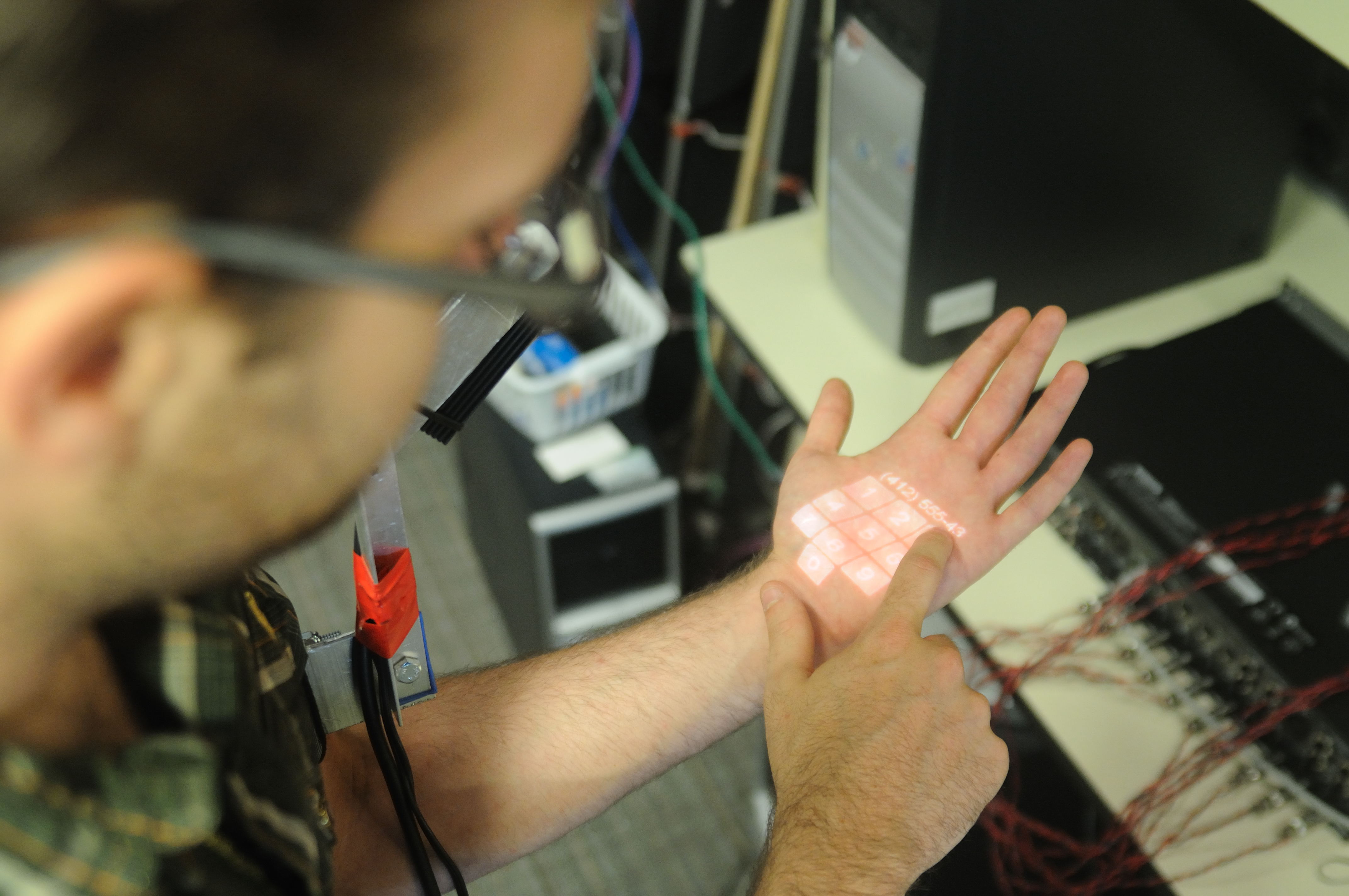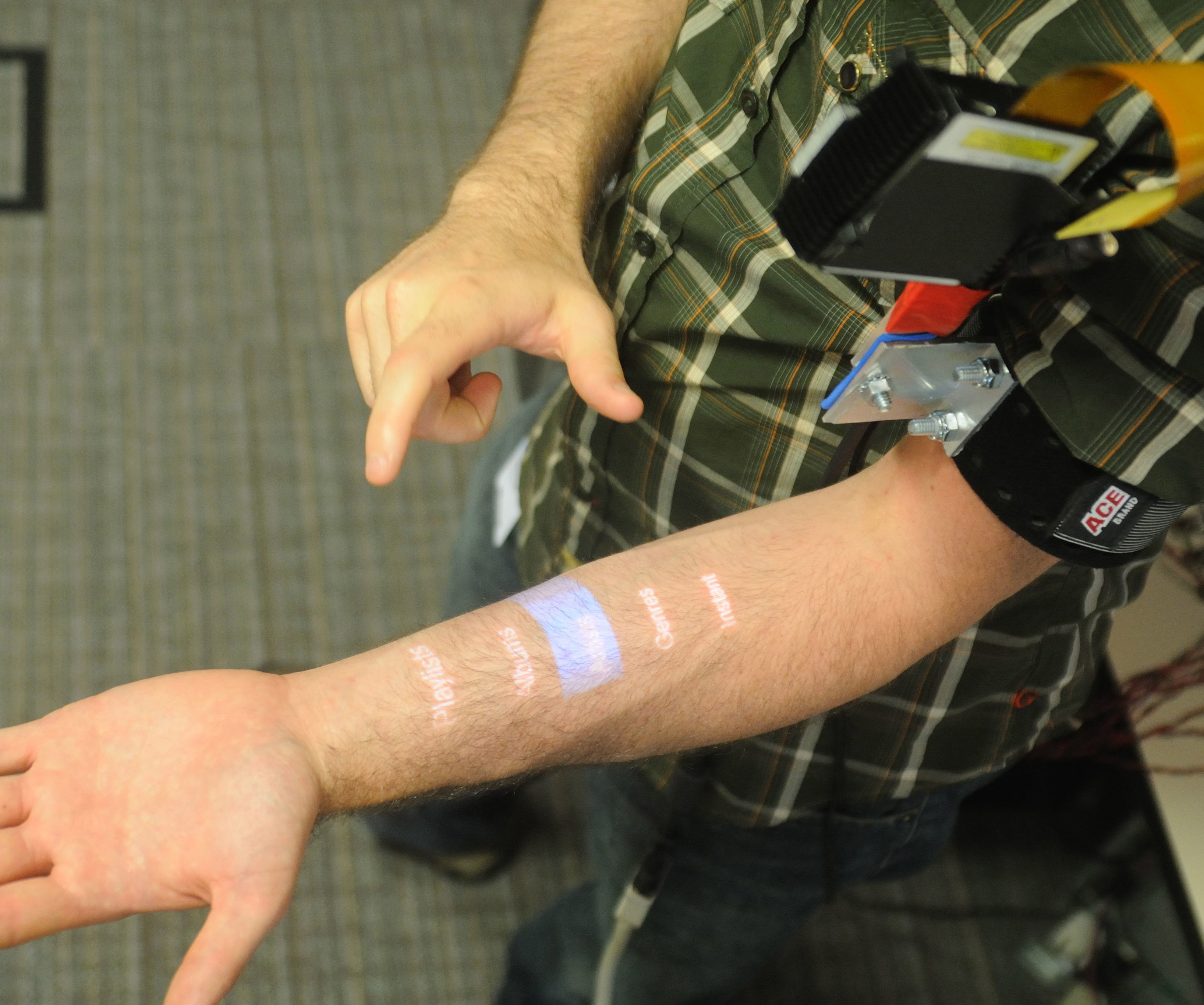HCII's Harrison Uses Skin As Input Surface for Mobile Devices
Byron SpiceThursday, March 4, 2010Print this page.

Chris Harrison, a third-year PhD student in the Human-Computer Interaction Institute, has worked with scientists at Microsoft Research to develop Skinput, a technology that turns the human body into a giant touchscreen.
Harrison previously had developed a way to turn ordinary tabletops and whiteboards into finger input surfaces. Skinput, developed with Microsoft researchers Dan Morris and Desney Tan, extends that idea further, providing an alternative to ever-shrinking and increasingly uncomfortable mobile keypads.
"We strap iPods and other devices onto our arms. Why not utilize all the external surface area that's already with us?" said Harrison. "What's great about skin, unlike tables, is that it travels with us."
At this stage, the Skinput armband contains a pico projector that displays the 'touchpad' on the user's hand or forearm, along with biosensors that recognize skin taps on corresponding locations of the body, based on bone and soft tissue variations.
The possibilities are staggering. Among other examples, Harrison envisions a future device no larger than a small stack of coins, worn around the wrist or bicep, with all the capabilities of an iPhone. Imagine typing an urgent email onto a projection on your hand.
Harrison and his colleagues will be presenting their paper at the ACM Computer-Human Interaction Conference in April, where they've already been awarded one of 14 Best Paper Awards out of ,more than 1,300 submitted. In addition, Harrison recently won one of 10 coveted Microsoft Research Ph.D. Fellowships.
"My training and my inspiration come from the people that I work with," he explained. "The graduate students in our HCI Ph.D. program are the smartest bunch of students in the world. They inspire me every day, and my advisor, Scott Hudson, does the same. It's not an accident that I'm able to create these new technologies. It's the environment that I'm in."
Harrison's larger goals include teaching others and bringing useful new technologies into the public domain, but his research has brought a welcome surprise.
"As someone who grew up loving technology, getting emails from people all around the world saying, 'This project is so cool, I'm thinking of studying computer science' is an incredible reward. To get other people excited about technology and interested in pursuing technology in their education and careers is an extra bonus," he said.
Links:
Skinput
HCII
Engadget Post
Gizmodo Post
Additional Story Links:
ACM CHI conference
Previous homepage story
OTHER LINKS IF YOU ARE CURIOUS:
http://news.cnet.com/8301-17938_105-10462255-1.html
http://news.discovery.com/tech/tap-your-skin-to-dial-your-phone.html
http://www.dailymail.co.uk/sciencetech/article-1254910/Skinput-The-gadget-turns-arm-touchscreen.html
http://www.wired.com/gadgetlab/2010/03/skinput-turns-your-arm-into-a-touch-screen/
http://www.huffingtonpost.com/2010/03/02/skinput-turns-your-skin-i_n_482135.html
http://www.newscientist.com/article/dn18591-body-acoustics-can-turn-your-arm-into-a-touchscreen.html


Byron Spice | 412-268-9068 | bspice@cs.cmu.edu
